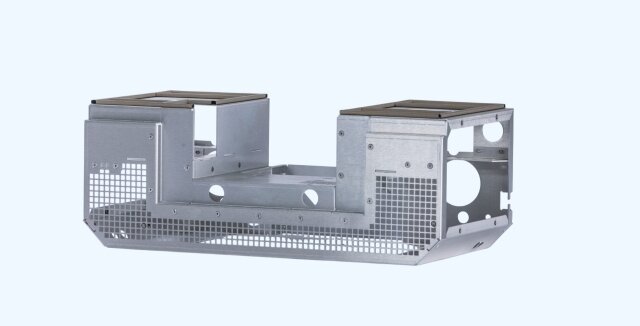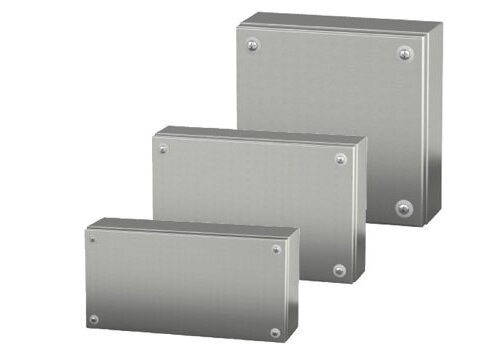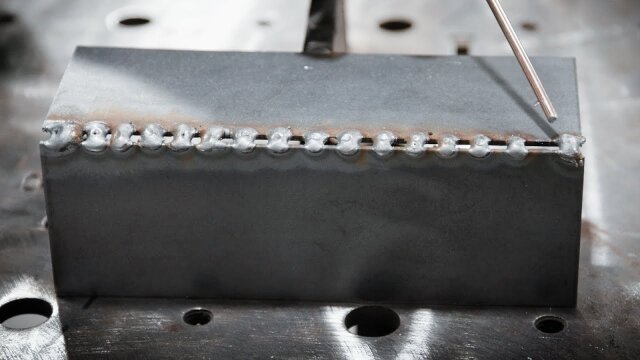Precision welding requires stable positioning, repeatability, and efficiency. Welds can be inconsistent without proper fixtures, leading to defects and costly rework. A well-designed welding fixture improves accuracy, reduces setup time, and increases production speed. It ensures that components are held in place securely, minimizing distortions caused by heat.
Want to know which fixture types best suit your specific welding projects? Let’s examine the main options and how they can improve your production workflow.
What is a Welding Fixture?
A welding fixture is a device or tool used to hold and position workpieces during welding. It ensures parts stay aligned correctly, making the welding process more accurate and efficient. These fixtures are used in manual and automated welding for precise and repeatable results.
These tools solve many common welding problems by eliminating the need for manual positioning and improvised holding methods. Good fixtures reduce operator fatigue, improve safety, and create a more efficient welding process with less rework.
Key Components of a Welding Fixture:
- Clamps: Hold the workpiece securely in place.
- Base Plate: Provides a stable surface for the fixture.
- Locators: Ensure the workpiece is positioned correctly.
- Supports: Prevent sagging or distortion during welding.
- Fasteners: Keep all parts of the fixture tightly connected.
How Welding Fixtures Work?
Welding fixtures create a stable framework that maintains part relationships throughout welding. Fixtures play several critical roles in welding operations:
- Part positioning: They place components in the exact location needed for proper weld joints
- Maintaining alignment: They keep parts from shifting during the heat and stress of welding
- Controlling distortion: They counteract the warping effects of concentrated heat
- Improving access: They position work for optimal welding angles and approach paths
- Ensuring repeatability: They allow consistent results across multiple production runs
Types of Welding Fixtures
Selecting the right welding fixture can make or break your project. Let’s explore the types of welding fixtures.
Based on Functionality
Welding fixtures can be classified by their level of automation and how they integrate with the welding process.
Manual Welding Fixtures
Manual welding fixtures are operated entirely by the welder without powered assistance. These simple yet effective tools rely on hand-tightened clamps and adjustments.
These fixtures work well for low-volume production and prototyping, where flexibility matters more than speed. They typically feature toggle clamps, set screws, and manual positioning blocks that welders can adjust between operations.
Despite their simplicity, good manual fixtures dramatically improve quality compared to freehand welding or makeshift holding methods.
Semi-Automated Welding Fixtures
Semi-automated fixtures combine manual loading with powered clamping or positioning features. This middle-ground approach balances flexibility with production efficiency.
These systems often use pneumatic or hydraulic clamps activated by a foot pedal or hand switch. Some include power-assisted positioning features that help align heavy components. The welder still controls the welding process, but the fixture handles the positioning and holding tasks.
Semi-automated fixtures excel in medium-volume production, where the same parts are welded repeatedly throughout the day.
Fully Automated Welding Fixtures
Fully automated fixtures work as part of robotic or mechanized welding systems. They handle part loading, positioning, clamping, and unloading with minimal human intervention.
These sophisticated systems use sensors, programmable controllers, and servo motors to manage the entire fixturing process. They often include automatic part verification to prevent welding misaligned components. The most advanced systems can adapt to part variations within defined parameters.
High-volume production facilities rely on these fixtures to maximize throughput and consistency.
Based on Structural Design
The physical configuration of welding fixtures varies widely based on production needs and part characteristics.
Modular Welding Fixtures
Modular fixtures use standardized components that can be arranged in countless configurations. This system offers excellent flexibility for changing production needs.
The building blocks include base plates with grid patterns, clamping components, locating elements, and support structures. These parts can be quickly assembled into new configurations for different welding projects. Many use t-slot or hole-grid patterns for mounting components.
Modular systems offer a good balance between versatility and performance for shops that work on diverse projects.
Dedicated Welding Fixtures
Dedicated fixtures are custom-designed for specific parts or assemblies. They provide optimal support and positioning for one particular welding operation.
These fixtures include features precisely matched to the part geometry, with custom-machined nests, profiled supports, and targeted clamping points. While less flexible than modular systems, they offer faster setup times and better precision for repeated production.
Production facilities making the same parts in high volumes benefit most from dedicated fixtures.
Universal Welding Fixtures
Universal fixtures offer broad adjustability to handle various part sizes and shapes. They provide maximum versatility when specific fixturing requirements aren’t known in advance.
These systems typically feature adjustable arms, pivoting heads, and sliding components that can be positioned as needed. Examples include welding positioners, adjustable vise systems, and multi-axis work holding platforms.
Job shops and repair facilities often prefer universal fixtures for their adaptability to unpredictable work.
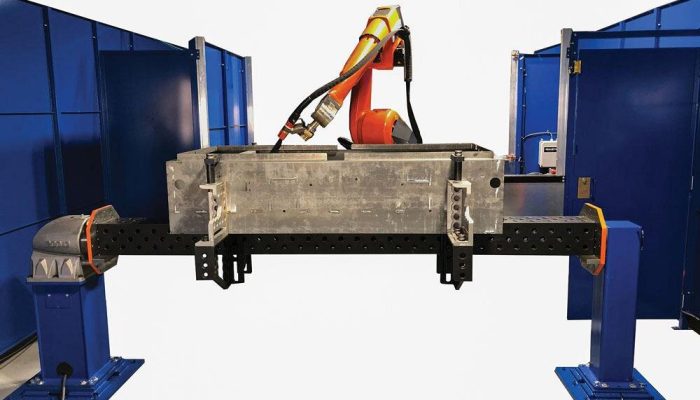
Essential Design Considerations for Welding Fixtures
Designing a welding fixture requires careful planning. Here’s what you need to know to create fixtures that improve accuracy, efficiency, and safety.
Material Selection
Material choice directly impacts fixture performance, durability, and weld quality. The right materials make all the difference in fixture effectiveness.
Most fixtures use steel for frames and bases due to its strength and stability. Tool steels like A2 or D2 work well for wearing surfaces and locating features. Materials that prevent galvanic reactions are essential for fixtures handling aluminum welding.
Heat management often requires copper or copper alloys near the weld zone. These materials draw heat away from critical dimensions and prevent distortion.
Part Geometry
Many fixture design decisions are driven by the shape and features of the parts being welded. Proper fixture design accounts for these geometric factors.
Fixtures must accommodate all critical dimensions and features while providing access to welding tools. Part complexity often determines whether a dedicated or modular fixture approach makes more sense. Thin or flexible components need additional support to prevent warping during welding.
Weld joint locations require careful consideration to ensure proper tool access while maintaining tight positioning. The fixture design must also account for how heat affects part dimensions during welding.
Ease of Use
User-friendly fixtures improve productivity and reduce operator fatigue. Good ergonomics leads to better welds and higher output.
Loading and unloading should be quick and intuitive, with apparent part positioning features. Clamps should operate with minimal effort while still providing a secure holding force.
Setup adjustments should be straightforward and require few tools. The best fixtures include visual indicators that confirm proper setup and part positioning before welding begins.
Safety Features
Proper fixture safety features protect workers and prevent accidents. Safety must be built into every fixture design.
Sharp edges and pinch points should be eliminated or adequately guarded. Clamps should include features preventing accidental release during welding. Fixtures for heavy parts need adequate stability to avoid tipping or shifting.
Proper grounding prevents electrical hazards during arc welding processes. Heat shields protect operators from burns when working near hot components. Emergency release mechanisms allow quick part removal if something goes wrong during the welding process.
Applications of Welding Fixtures in Different Industries
Welding fixtures are used in many industries, from automotive to aerospace. Discover how they solve unique challenges and improve production in different fields.
Automotive Industry
Welding fixtures are vital in car manufacturing. They ensure precise welding of frames, exhaust systems, and body panels. Fixtures help maintain consistency and speed in high-volume production, reducing errors and improving quality.
Aerospace Industry
In aerospace, precision is non-negotiable. Welding fixtures are used to assemble components like turbine blades and fuselage sections. They ensure tight tolerances and high-quality welds, meeting strict safety and performance standards.
Heavy Machinery and Construction
Heavy-duty welding fixtures handle large, bulky parts like structural beams and pipelines. They provide the strength and stability needed for welding thick materials, ensuring durability in demanding environments.
Consumer Goods and Electronics
Welding fixtures ensure precision without damaging components for smaller, delicate parts. They are used in smartphones, laptops, and home appliances, where accuracy and consistency are key.
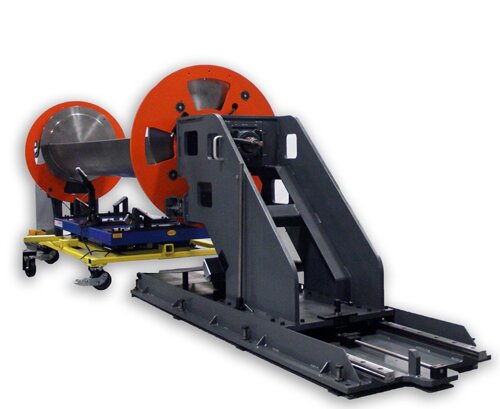
Benefits of Using Welding Fixtures
Welding fixtures bring precision, speed, and safety to your production process. Let’s explain how they can transform your workflow and deliver accurate results.
Improved Accuracy
Welding fixtures hold parts in the exact position needed for precise welding. This reduces errors and ensures consistent quality, especially in complex or high-precision projects.
Faster Production
Fixtures streamline the welding process by eliminating manual adjustments. They allow welders to work more efficiently, speeding up production and meeting tight deadlines.
Cost Savings
Welding fixtures save time and materials by reducing errors and rework. They also lower labor costs by making the welding process faster and more efficient.
Enhanced Safety
Fixtures secure parts firmly, reducing the risk of accidents. They also minimize exposure to heat and sparks, creating a safer working environment for operators.
Common Challenges and Solutions
Even the best welding fixtures can face issues. Let’s explore common challenges and practical solutions to keep your welding process running smoothly and efficiently.
Heat Distortion
Heat distortion represents one of the biggest challenges in welding fixture design. The intense heat from welding causes metal expansion, leading to warping and dimensional changes.
Most fixtures address this through strategic material selection and heat management features. Copper backing bars placed behind the weld joint absorb excess heat and promote even cooling. Some advanced fixtures include built-in cooling channels that circulate water or air to maintain stable temperatures.
Complex Part Shapes
Irregularly shaped components with curves, angles, and varying thicknesses present challenges. Standard clamping methods often struggle with these geometries.
Custom-contoured support blocks and nests solve this problem by matching the part profile. Modern manufacturing methods like CNC machining and 3D printing make creating these specialized supports more affordable. Adjustable supports with ball-ended set screws can also adapt to curved surfaces.
High Costs
The initial investment for quality welding fixtures can be substantial, especially for small manufacturers. This cost barrier sometimes leads shops to delay fixture implementation despite knowing the benefits.
Modular fixturing systems help address this challenge by spreading the investment across multiple projects. The same components can be reconfigured for different parts, creating a better return on investment. Some companies also start with simple fixtures for their highest-volume products and expand as savings accumulate.
Conclusion
Welding fixtures are essential tools in modern manufacturing. They improve precision, efficiency, and safety. By choosing the right type and design, you can optimize your welding process and achieve better results. Whether you’re working on small prototypes or large-scale production, welding fixtures are a wise investment.
Welding fixtures can take your production to the next level. If you’re looking to improve accuracy, speed, and safety, we’re here to help. Contact us today for a free consultation, and let’s find the perfect solution for your needs.
FAQs
What materials are commonly used in welding fixtures?
Welding fixtures are often made from steel, aluminum, or cast iron. Steel is durable and handles high stress, while aluminum is lightweight and resists corrosion. The choice depends on the application and budget.
How do welding fixtures improve welding precision?
Fixtures hold parts in the exact position needed for welding. This eliminates human error and ensures consistent alignment, resulting in higher precision and better-quality welds.
Can welding fixtures be customized for specific projects?
Yes, welding fixtures can be tailored to fit unique part shapes and sizes. Custom designs ensure optimal support and alignment, especially for complex or irregular workpieces.
How do robotic welding fixtures differ from manual ones?
Robotic welding fixtures are automated and work with welding robots. They offer faster operation, higher consistency, and minimal human intervention. Manual fixtures require hands-on operation and are better for small-scale or custom projects.
Hey, I'm Kevin Lee

For the past 10 years, I’ve been immersed in various forms of sheet metal fabrication, sharing cool insights here from my experiences across diverse workshops.
Get in touch

Kevin Lee
I have over ten years of professional experience in sheet metal fabrication, specializing in laser cutting, bending, welding, and surface treatment techniques. As the Technical Director at Shengen, I am committed to solving complex manufacturing challenges and driving innovation and quality in each project.


